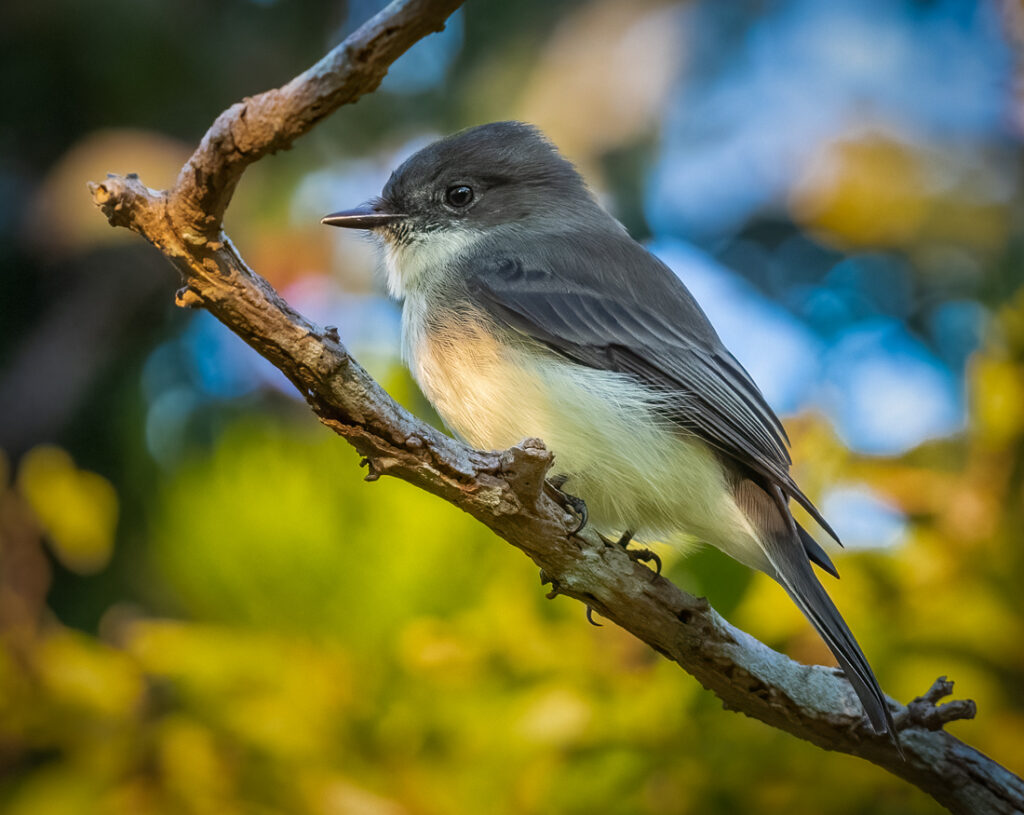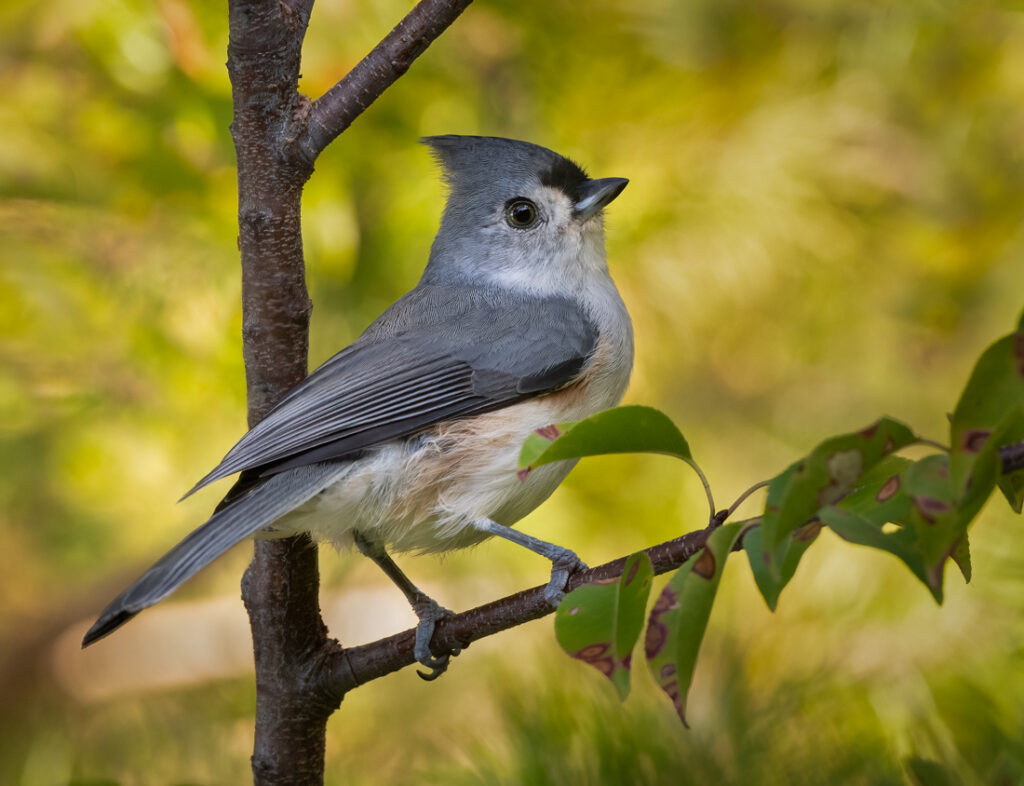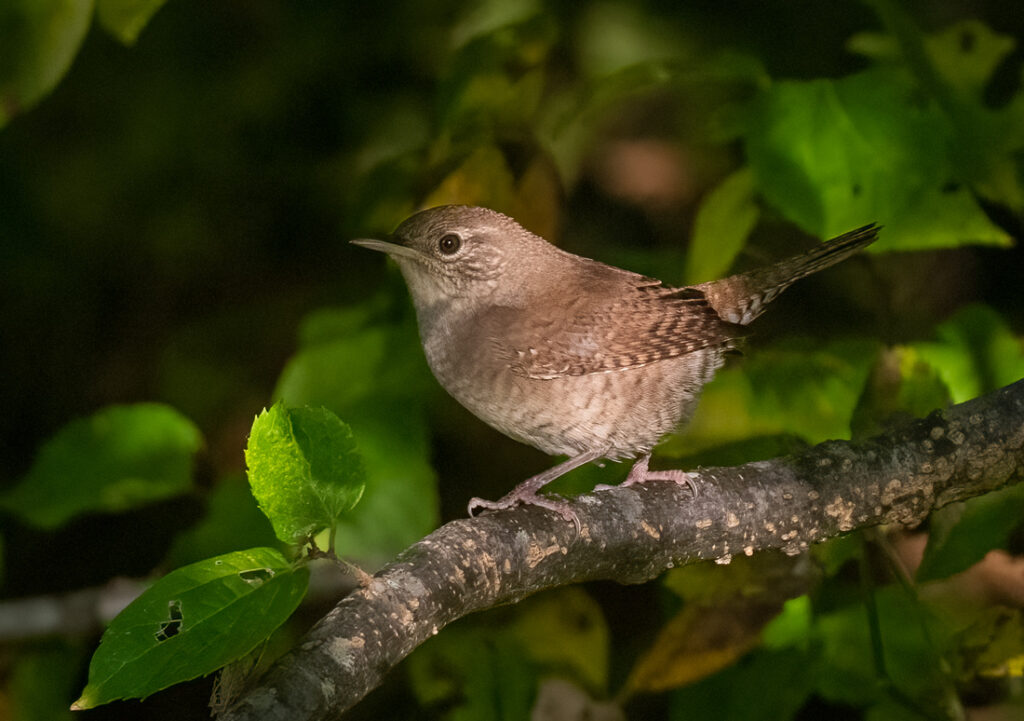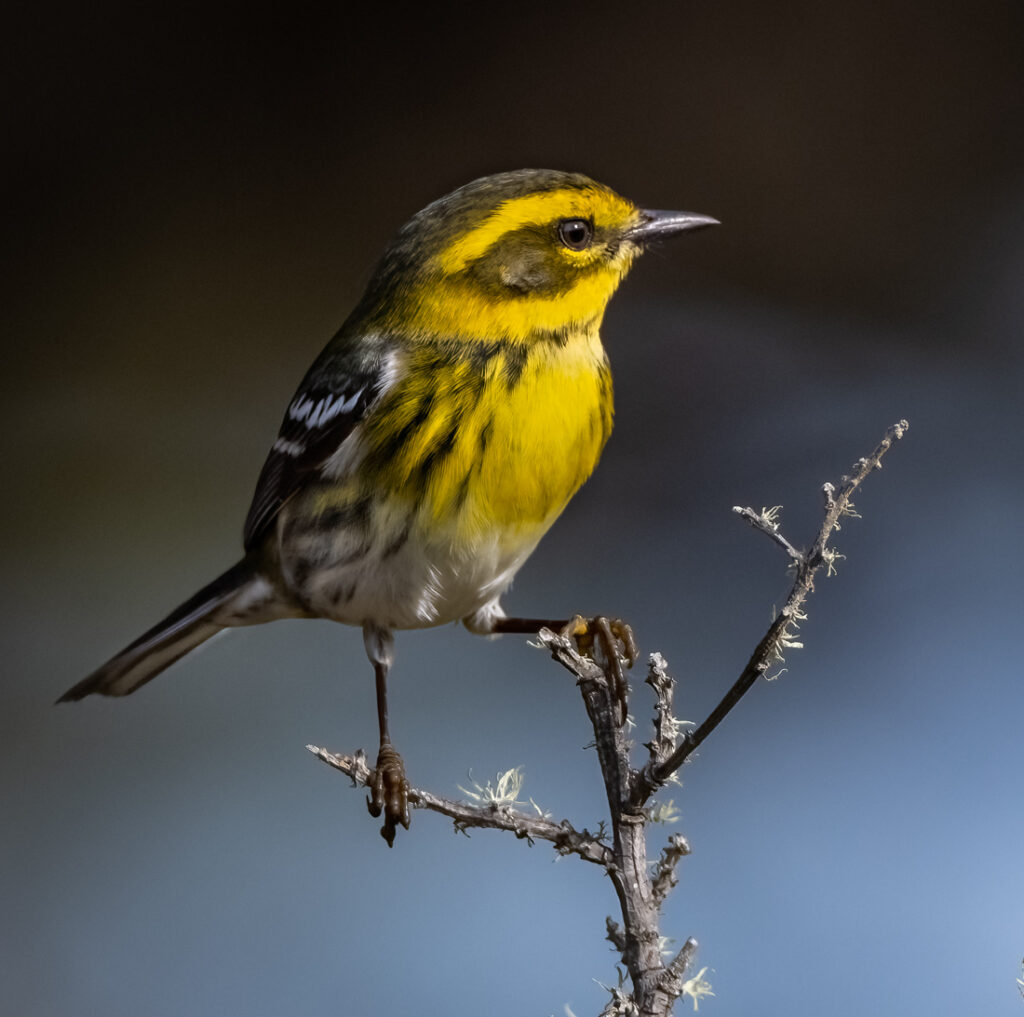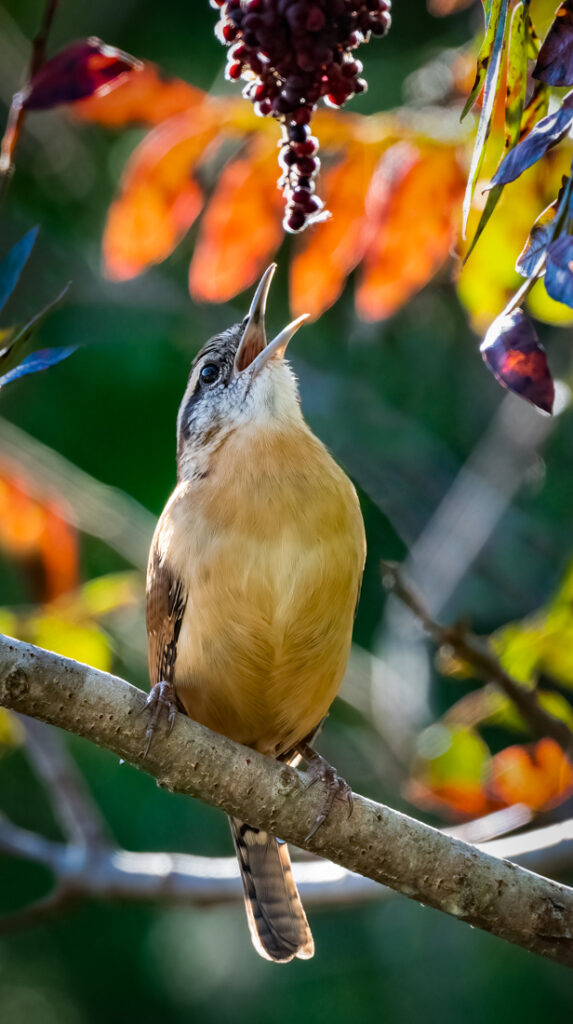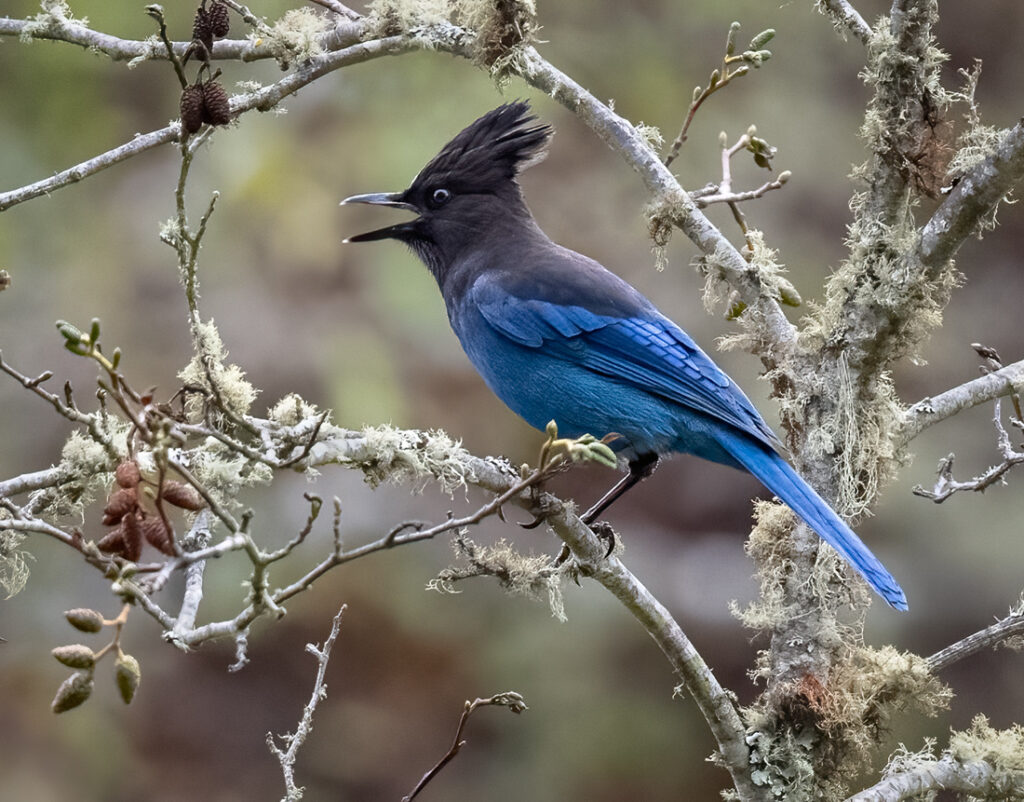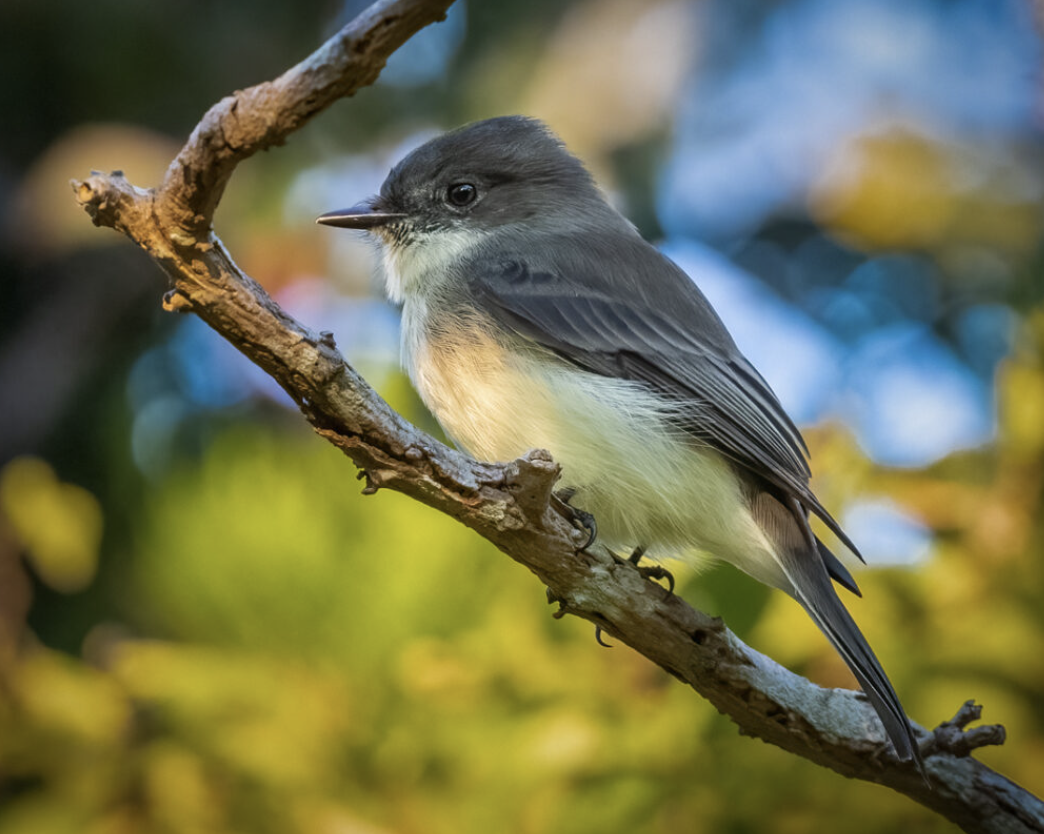
Birds can be beautiful photography subjects year-round, though often photographers focus on the bright breeding colors and charming nesting behavior of spring and summer. I find that fall and winter are equally outstanding, however, and can give photographers even more of a challenge to see birds at their very best as well as help refine seasonal photography skills.
Bird Photography in Fall and Winter
Spring and summer are beautiful seasons, but it’s easy to be distracted by that beauty, from colorful spring blooms and summer cloud formations in perfect blue skies to all the seasonal activities that demand our attention.
Autumn and winter, however, have a more subtle beauty that can enhance bird photography instead of distracting from it. Fall foliage, for example, is rich in warm tones and can be a phenomenal setting for rich backgrounds that highlight the activity of autumn birds. Likewise, the soft lines and monochrome whites of a winter setting help birds truly pop in photos, drawing the eye right to the bird instead of filling the frame with clutter.
I also find that birds are even more fascinating in fall and winter. Just as summer activities are winding down, birds are getting more active and energetic in migration. Even resident birds get in on the action as they store seeds and nuts for winter use, and it’s a privilege to witness and photograph those interesting behaviors. Young birds are also fun to photograph in fall as they become less wary and stretch their wings, both figuratively and literally, to learn essential survival behaviors as the season changes.
Tips for Fall and Winter Bird Photos
Of course, fall and winter can be more technically challenging for bird photography, particularly with lighting. The morning and evening light can be stunning, but it changes quickly and you need to be prepared to snap at a moment’s notice. This is where a burst mode can really help you capture the exact lighting you want, and will help you catch the tiniest changes in an active bird’s posture and position.
Because weather conditions can change rapidly in fall and winter, it is essential to safeguard not only yourself but your equipment as well. Moving from a warm car to a chilly nature preserve, for example, can fog up lenses, so be sure your gear has time to acclimate before you’re ready to shoot. Very cold temperatures can also drain battery power more quickly than expected, so carry a spare and, if possible, tuck batteries inside your jacket in fall and winter to keep them a bit warmer.
Capturing a piece of fall and winter weather in bird photography, however, can add an extra something special to each shot. Falling snowflakes, for example, help tell the story of the bird’s setting and activities at that moment, creating a more complete image. Similarly, drips of rain or a rim of frost on a leaf or branch the bird is perched on add tangible evidence of the season to every shot.
Which Birds to Photograph?
There are more birds to photograph in fall and winter than most photographers realize. Not only are year-round residents like chickadees, woodpeckers, and jays still active, but migrating birds are passing through and shorelines are packed with birds resting on their journeys before or after crossing broad lakes and bays. Shorebirds, raptors, and waterfowl are all great birds to watch for in fall and winter, and pictures in these lesser-known seasons can always be remarkable.
It’s important to pay attention to vagrant sightings, especially in fall and winter when more birds get lost and can appear far outside their expected ranges. This can create spectacular opportunities to photograph birds that might otherwise be hundreds or even thousands of miles away, such as tropical species appearing in northern areas or even European or Caribbean birds showing up in the United States.
Best Times of Day to Photograph Birds
Anytime can be a great time of day to photograph fall and winter birds, particularly since the sun won’t be as glaring in midday as it would be in midsummer. Light conditions can vary, however, and glare off the snow can disrupt an otherwise perfect photo through overexposure and too much white. Overcast conditions are best to create diffuse light, but it’s easy to adjust exposure to balance light for that perfect shot. When shooting in autumn, a bright, sunny day is best for woodland shots, when the overall light will be brighter in dappled shade and will highlight foliage colors.
Keep It Close
The one thing many bird photographers forget about birds in fall and winter is that you can get phenomenal photos close to home – even right at home. Use a backyard or garden setup with cut branches positioned to be ideal perches against the right background, and you can be rewarded with outstanding photos, no travel needed. A water feature, such as a heated bird bath, can also draw birds in during the winter months, providing amazing activity right outside the windows, ready for a click.
Fall and winter provide more amazing opportunities than many birders and photographers realize. These seasons are ideal for sharpening both photography and birding skills, helping us all recognize and appreciate greater beauty in every season. The more we are able to do that, the less we will take each of these seasons and all the wonder they bring for granted.



